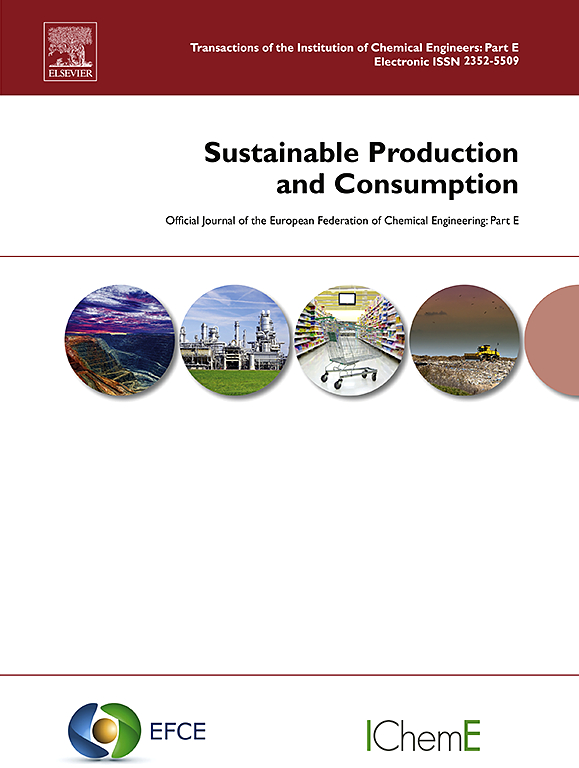测试循环措施:寿命和寿命结束模型对欧盟住宅建筑存量环境影响的影响
IF 10.9
1区 环境科学与生态学
Q1 ENVIRONMENTAL STUDIES
引用次数: 0
摘要
减少建筑行业对环境的影响,无论是通过减少其运营能耗还是促进循环实践,都是欧盟多项政策举措的目标。虽然已经提出了不同的建模方法来量化欧盟建筑存量的环境影响,但这些模型对与循环经济措施相关的关键参数的敏感性方面的知识有限。为了填补这一空白,本研究旨在测试寿命和寿命终止模型选择,以更好地了解它们对欧盟住宅部门环境影响量化的影响,使用由欧盟委员会-联合研究中心(JRC)开发的基于生命周期评估(LCA)的建筑存量模型作为参考模型。研究人员探讨了影响建筑物及其组件使用寿命的参数,以及它们的寿命终止路径。敏感度分析也被执行,以评估模型的鲁棒性时,受到从文献中得出的参数变化。结果表明,由于运行能源阶段的突出作用,除颗粒物影响类别外,库存水平的环境影响结果不受参数变化的显著影响,在同时测试较短的整理材料使用寿命和较低的焚烧和回收利用率时,其变化达到了>;10%。然而,将焦点转移到具体影响上,导致模型的敏感性增加,使用寿命长度引起的振荡掩盖了与生命终止处理变化相关的振荡:就单加权得分而言,前者可以实现超过100%的建筑级别变化(假设寿命较短),而后者不超过38%(当最大化焚烧率时)。因此,在使用这种基于lca的模型作为核查促进建筑部门内循环的措施的潜在效益的基础时,有必要考虑到这些波动,特别是因为上述措施主要针对具体影响。本文章由计算机程序翻译,如有差异,请以英文原文为准。
Testing circularity measures: Lifespan and end-of-life modelling influence on the environmental impact of the EU residential building stock
The reduction of the environmental impacts of the building sector, either through a decrease in its operational energy consumption or the promotion of circular practices, is the target of multiple EU policy initiatives. While different modelling approaches have been proposed to quantify the environmental impacts of the EU building stock, limited knowledge is available on the sensitivity of these models to key parameters associated with circular economy measures. To fill this gap, this study aims at testing lifespan and end-of-life modelling choices to gain an improved understanding of their effect on the quantification of the environmental impacts of the EU residential sector, using a Life Cycle Assessment (LCA)-based building stock model developed by the European Commission – Joint Research Centre (JRC) as the reference model. Several options were explored in relation to parameters affecting the service lives of buildings and their components, along with their end-of-life pathways. A sensitivity analysis was also performed to evaluate the model's robustness when subjected to parameter changes derived from the literature. It emerged that, due to the prominent role played by the operational energy phase, environmental impact results at the stock level were not significantly affected by parameter changes, with the exception of the particulate matter impact category, which achieved >10% variations when simultaneously testing shorter finishing material service lives and lower incineration and recycling rates. Shifting the focus to embodied impacts, however, led to increased sensitivity in the model, with oscillations due to service life length overshadowing those connected to end-of-life treatment changes: in terms of single weighted score, the former can achieve a building-level variation of over 100% (when assuming short lifespans), while the latter does not exceed 38% (when maximising incineration rates). It is therefore necessary to take these fluctuations into account when using this LCA-based model as a basis for verifying the potential benefits of measures to promote circularity within the building sector, particularly as said measures primarily target embodied impacts.
求助全文
通过发布文献求助,成功后即可免费获取论文全文。
去求助
来源期刊

Sustainable Production and Consumption
Environmental Science-Environmental Engineering
CiteScore
17.40
自引率
7.40%
发文量
389
审稿时长
13 days
期刊介绍:
Sustainable production and consumption refers to the production and utilization of goods and services in a way that benefits society, is economically viable, and has minimal environmental impact throughout its entire lifespan. Our journal is dedicated to publishing top-notch interdisciplinary research and practical studies in this emerging field. We take a distinctive approach by examining the interplay between technology, consumption patterns, and policy to identify sustainable solutions for both production and consumption systems.
 求助内容:
求助内容: 应助结果提醒方式:
应助结果提醒方式:


